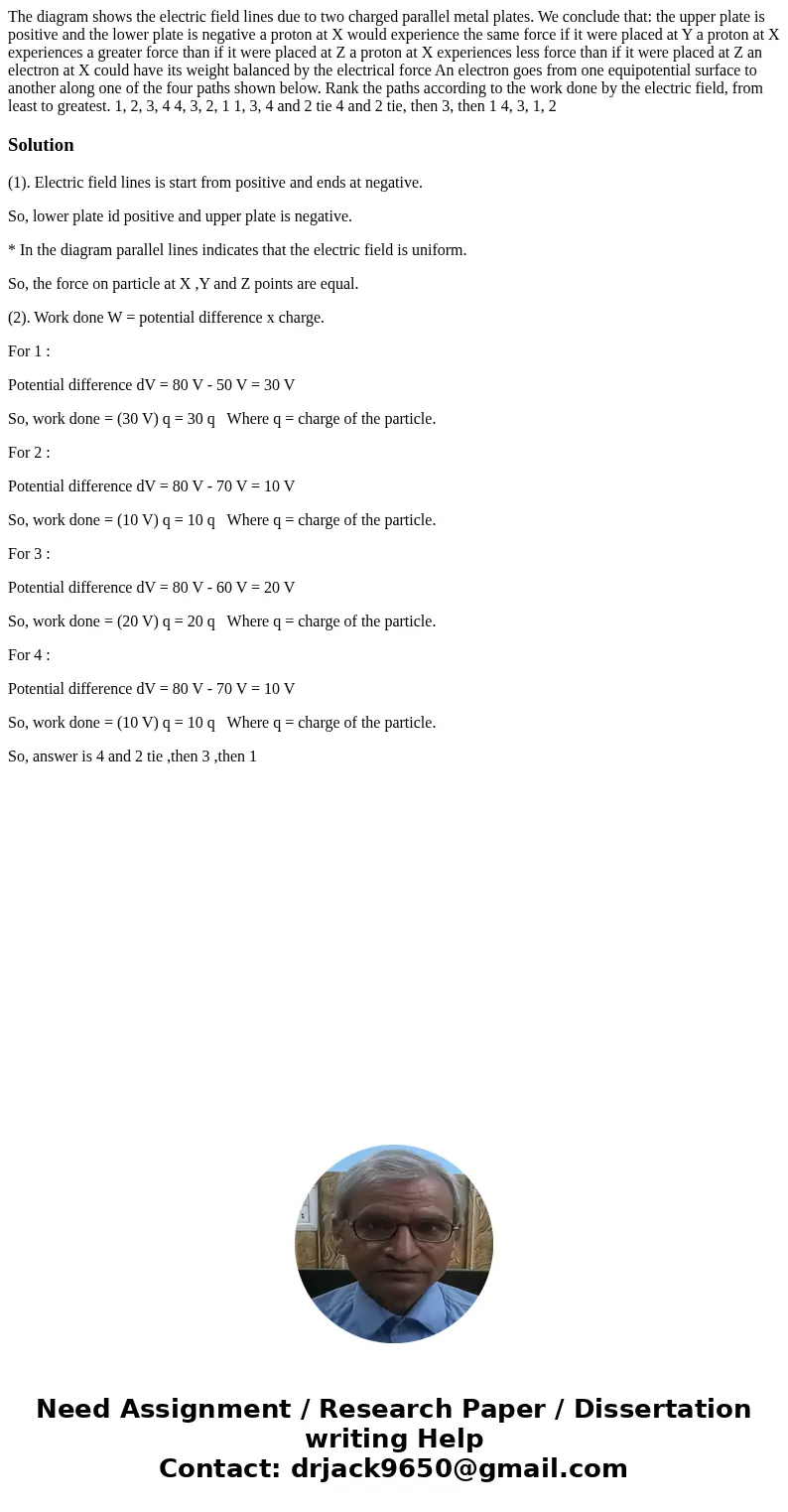The diagram shows the electric field lines due to two charge
Solution
(1). Electric field lines is start from positive and ends at negative.
So, lower plate id positive and upper plate is negative.
* In the diagram parallel lines indicates that the electric field is uniform.
So, the force on particle at X ,Y and Z points are equal.
(2). Work done W = potential difference x charge.
For 1 :
Potential difference dV = 80 V - 50 V = 30 V
So, work done = (30 V) q = 30 q Where q = charge of the particle.
For 2 :
Potential difference dV = 80 V - 70 V = 10 V
So, work done = (10 V) q = 10 q Where q = charge of the particle.
For 3 :
Potential difference dV = 80 V - 60 V = 20 V
So, work done = (20 V) q = 20 q Where q = charge of the particle.
For 4 :
Potential difference dV = 80 V - 70 V = 10 V
So, work done = (10 V) q = 10 q Where q = charge of the particle.
So, answer is 4 and 2 tie ,then 3 ,then 1

 Homework Sourse
Homework Sourse